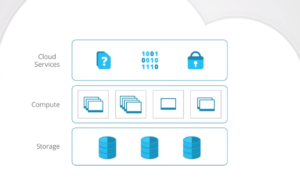
Snowflake to Make it SNOW on NYSE

Snowflake CEO Frank Slootman makes it snow
Rumors have been swirling for weeks that Snowflake confidentially filed for an IPO with the Securities and Exchange Commission. Yesterday, the Silicon Valley-based cloud data warehousing company made it official: It intends to start selling shares on the New York Stock Exchange under the ticker symbol SNOW.
The rapid ascent of Snowflake has been one of the better stories in the big data market over the past few years. Founded by database experts Benoit Dageville, Thierry Cruanes, and Marcin Zukowski in 2012, Snowflake was created from the ground up to be an analytics database that runs in a cloud-native manner, which means that it separates compute and storage.
Snowflake is best known for running an efficient cloud-based data warehouse upon which customers can quickly spin up big SQL analytics workloads, and then spin them down when they’re not needed, which saves money. The company runs predominantly on AWS, for whom it’s committed to spend $1.2 billion on through 2025 for infrastructure services, according to the S-1. It also runs on Google Cloud, and Microsoft Azure, and competes with all three cloud vendors’ massively parallel processing (MPP) offerings, including RedShift, Big Query, and SQL Warehouse.
When many companies bet on the Hadoop architecture to process big data over the past five years, the folks at Snowflake insisted that a cloud-hosted relational database model was what the market really wanted. Former Snowflake CEO Bob Muglia was brutal in his 2017 assessment of Hadoop, but Muglia’s words turned out to be prescient (the fact that AWS, Google Cloud, and Microsoft all continue to rely on Hadoop components for their big data cloud offerings notwithstanding).

The separation of compute and storage for big data analytics workloads is the key ingredient in Snowflake’s cloud success
Under new CEO Frank Slootman (formerly of ServiceNow), Snowflake has pivoted. It’s not just a cloud data warehouse used by business analysts and other experts who traditionally interface with MPP column-oriented databases like Teradata and Vertica. Instead, Snowflake is pushing the idea that it’s a cloud data platform, or a “data cloud,” that can be used for all sorts of things.
The elimination of data silos is a key element of Snowflake’s data cloud strategy, according to presentations at the company’s recent virtual conference. As the hub for all its customers’ cloud data activities, the Snowflake data cloud can eliminate the difficulties that come with sourcing, integrating, governing, and managing disparate data silos.
The market has responded to what Snowflake is selling. It had about 1,550 customers in July 2019, which grew to 3,100 at the end of July 2020, according to the S-1. Those customers (including Capital One, Sony, Adobe, and McKesson, among others) execute more than 500 million queries every day across a variety of workloads, including data engineering, data warehousing, data science, and other data applications.
In October 2018, the company surprised peers in the big data market when it raised $450 million at a valuation of $3.5 billion. Earlier this year, it raised another $479 million, with a valuation reported in excess of $12 billion. Clearly, there’s demand for what Snowflake is selling, both on Sand Hill Road and in the board rooms of companies around the world.
According to the S-1 form it filed yesterday, the company recorded $418 million in revenue over the past four quarters, and is currently increasingly its quarterly revenue at a blistering 121% pace. It’s also recorded sizable losses, totaling $178 million in fiscal 2019 and $348 million last year. However, its losses narrowed in the second half of fiscal 2020, as profits increased.
The shift to the cloud has accelerated under COVID-19, and that has benefited Snowflake. It’s also benefiting other companies that use the cloud as their platform, including Databricks, another cloud native that has come on strong in recent years (and which we expect an IPO from at some point in time).
The company also goes up against on-prem stalwarts like Teradata, Vertica, IBM, and Oracle, not to mention Cloudera, which offers both cloud and on-prem solutions that work in a hybrid manner, which is not something that Snowflake does.
Related Items:
What Is a Data Cloud? And 11 Other Snowflake Enhancements
Snowflake Rides Cloud Wave to Great Heights
Slootman Makes It Snow at Snowflake Summit































